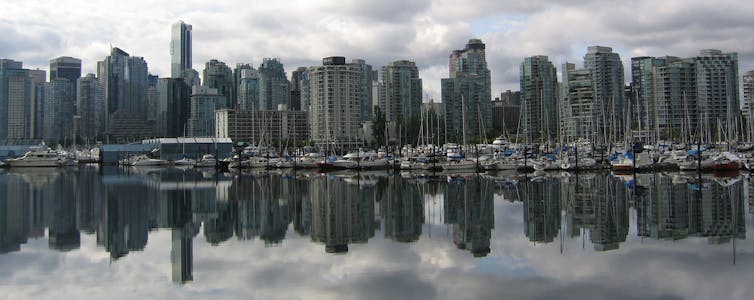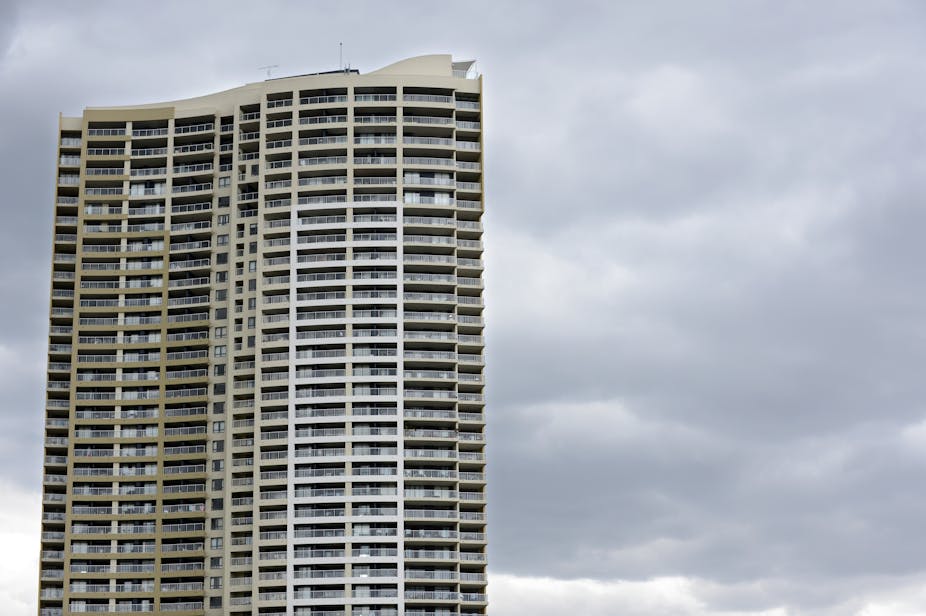It is true that the main culprits for housing prices in Australia are taxation and regulation regimes, as argued by Stephen Kirchner last week. But this is more because of their impact on demand than supply.
Generous incentives including negative gearing and concessions on capital gains tax encourage investment in housing, to the extent that around one in seven Australian taxpayers now owns one or more investment properties.
As there is no limit to how many properties local investors can negatively gear, and with share markets volatile, investment properties are looking increasingly attractive. Australia already has one of the highest levels of household debt in the OECD due to borrowings for property purchases, and this is growing fast.
Overseas investors are adding to that demand. The Foreign Investment Review Board enables global investors to buy new housing in Australia. Along with Canada, Australia has emerged from the 2008 global financial crisis as a stable economy and good investment prospect, with one of the strongest property markets in the world.
Infinite demand
The upshot is that local and global investor markets are combining to create what is essentially an infinite level of demand. Intense competition at sale is a major contributor to Australia’s declining housing affordability.
The rationale for new high-rise housing in the inner city is that an increase in supply will eventually meet demand. It follows then that as demand is satisfied, prices will come down and affordability will increase. In addition, this form of housing is supposed to be the most environmentally sustainable. On all three counts, unfortunately, the rationale is not borne out.
It is true, however, that the high-density, high-rise, high-security housing currently being built in the inner city is the preferred form and location for both local and global investment markets.
Australian governments need to come to terms with the prospect that no amount of increase in housing supply will meet demand if there is no limit to that demand. The relation is complicated further by the fact that investment properties are often left vacant.
There is no reliable source of data on whether the more than 20,000 high-rise apartments built in inner-Melbourne in the last decade are owner-occupied, rented or vacant, but unofficial estimates from the City of Melbourne indicate that up to 90% are owned by investors and that a large number are unoccupied.
As Kirchner observes, this is a rational response when prospective capital gains provide sufficient return on the investment. As local investors can negatively gear a property with only a few weeks of rental income, and as global investors have their eyes on the capital return on sale, keeping the apartment empty for most of the year can be preferable to dealing with tenants and real estate agents.
Lessons from Canada
Recent experience in Canadian cities is similar. Multiple clusters of 30 to 50 storey condominium towers have sprung up in Vancouver’s downtown and major centres, and the rate of construction is showing no sign of slowing.
Last year the BC Globe and Mail ran a story about the closure of a two-year-old store called Green Design in Coal Harbour. The proprietors’ dream of supplying all those condo balconies in need of greening with space-saving wall planters, herbs and pot plants had come to naught, they said, because “a hefty share” of the condos were empty most of the year round.

There are two main classes of owners, the proprietors said: overseas investors, and American and Canadian holiday-condo owners, none of whom are there for more than a couple of months a year. The City of Vancouver estimates that at least 25% of new condos are owned by non-resident investors from less stable economies looking to park their wealth in a safe environment. The Green Design proprietors say these apartments are permanently empty. When the holiday-condos are included, many buildings are more than half empty.
And affordability loses again
It is clear that in both Melbourne and Vancouver the dramatic increase in housing supply is not only not meeting demand, but not increasing affordability. There is simply no evidence, after more than a decade of high-rise apartment construction in both cities, that housing prices have moderated even in the most relative of terms.
No amount of flash inner-city apartments will bring the price of housing down in the suburbs and on the fringe. In both Melbourne and Vancouver, the greatest housing need is for low- to medium-income housing. Even if the new inner-city apartments were available for rent, this is not the market for which they are built.
Finally, there’s the ecological fallacy: that high-density housing is the most environmentally sustainable form. A strong case has been made by a number of Australian researchers that per capita levels of consumption are actually lower in medium-density housing than in inner-city residential towers. This is not taking into account the materials involved in high-rise construction, nor the local environmental and amenity impacts of the towers and their multi-storey car-parks.
International and local research shows that government visions for Melbourne and Vancouver are not meeting their basic policy objectives. High-density, high-rise, high-security and high-cost apartment towers are not meeting local housing demand. They are not increasing affordability. They are not more environmentally sustainable.
They are increasing housing supply, mainly for local and global elites to accumulate capital. A major consequence of the Australian government’s taxation and regulatory regimes regarding housing has been to increase prices by encouraging demand for housing as a commodity, rather than a place to live.
The various inquiries into the state of the Australian housing market should look at not just the regulations on foreign investment, but at the taxation regimes that encourage the home-grown approach.
Most importantly the inquiries should ask: what is the effect of Australian regulation and taxation regimes on what is being built, and for whom?

